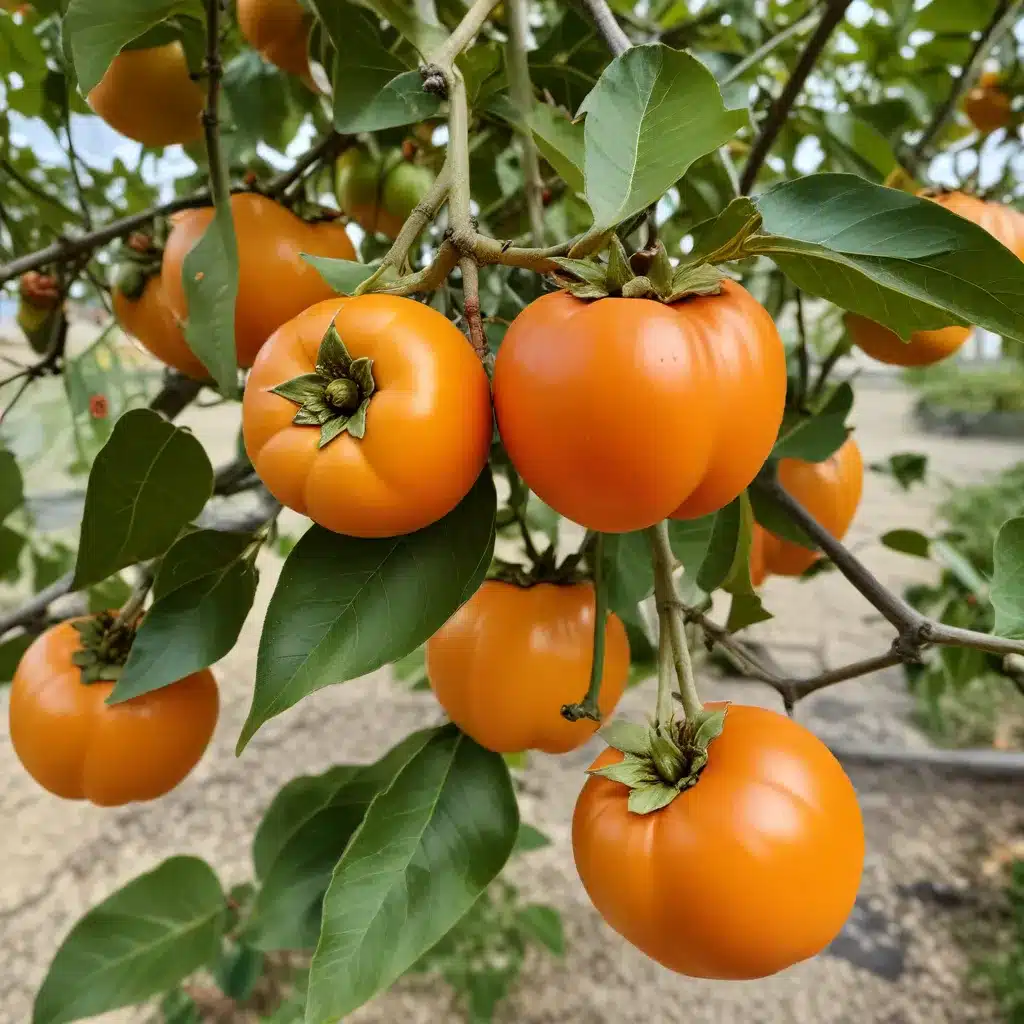
In the enchanting realm of autumnal treasures, the American Persimmon (Diospyros virginiana) stands as a testament to the splendor of the season. With its luscious fruit, vibrant foliage, and cultural significance, this native tree beckons to be admired, savored, and celebrated as a symbol of abundance and natural beauty.
Botanical Classification and Characteristics
Scientifically known as Diospyros virginiana, the American Persimmon graces the landscapes of North America with its elegant form and seasonal bounty. Belonging to the Ebenaceae family, this deciduous tree is native to the eastern United States, thriving in a range of environments from Florida to New England.
The American Persimmon’s distinctive features include its broad, ovate leaves that transform from deep green to shades of gold, orange, and crimson in the fall. Its smooth, gray bark develops a unique, scaly texture as the tree matures. Intriguing hexagonal patterns adorn the bark, adding visual interest to the tree’s overall aesthetic.
Cultivation and Growing Conditions
The American Persimmon flourishes in well-drained, acidic soils with a pH range of 6.0 to 7.0. It prefers full sun exposure, thriving in USDA Hardiness Zones 4 through 9. This hardy species can tolerate a variety of soil types, including clay, loam, and sandy compositions, as long as they provide adequate drainage.
Propagation of the American Persimmon is typically achieved through seed, grafting, or vegetative cuttings. In orchards and home gardens, growers often opt for grafted trees to ensure consistent fruit quality and desired cultivar characteristics. Proper pruning and canopy management are essential for maintaining the tree’s structure and promoting bountiful harvests.
Sensory Attributes and Culinary Uses
One of the most enchanting features of the American Persimmon is its delectable fruit, prized for its sweet flavor and custard-like texture when fully ripe. As the fruit matures in late fall, it becomes a focal point of wildlife activity, attracting birds and mammals eager to feast on its succulent flesh.
For human consumption, the persimmon offers a culinary delight, whether enjoyed fresh, dried, or incorporated into a variety of dishes, desserts, and beverages. The fruit’s vibrant orange hue and soft, velvety texture lend themselves well to baking, preserves, and even savory preparations. Persimmon puree can be used to add sweetness and depth to sauces, marinades, and even cocktails.
Nutritional Value and Health Benefits
Beyond its culinary appeal, the American Persimmon boasts impressive nutritional value. It is a rich source of dietary fiber, vitamins A and C, as well as essential minerals like manganese and copper. The fruit’s high tannin content also contributes to its antioxidant properties, making it a valuable addition to a healthy, balanced diet.
Persimmons have been studied for their potential health benefits, including their ability to support immune function, improve digestion, and even reduce the risk of certain chronic diseases. The fruit’s high fiber content and low glycemic index make it a suitable choice for individuals managing blood sugar levels.
Cultural Significance and Historical Context
The American Persimmon has long been a part of the cultural fabric of the regions it inhabits. Native American tribes, such as the Cherokee and Choctaw, have a rich history of utilizing the tree’s fruit, leaves, and wood for various purposes, including food, medicine, and crafts.
In the Appalachian region, the persimmon has become a symbol of autumn’s abundance and a staple in traditional cuisine. Persimmon pudding, a beloved regional delicacy, is a testament to the fruit’s enduring cultural significance. Similarly, the tree’s wood has been prized for its strength and density, making it a valuable resource for furniture, tool handles, and even musical instruments.
Pests, Diseases, and Environmental Challenges
Despite its hardy nature, the American Persimmon is not immune to various pests and diseases. Common issues include persimmon blight, caused by the fungus Diospyros virginiana, as well as insect infestations such as the persimmon borer and the persimmon curculio. Growers and gardeners must remain vigilant in monitoring their trees and implementing integrated pest management strategies to ensure the health and longevity of their persimmon orchards and landscapes.
Persimmons are also susceptible to environmental stressors, including drought, frost, and heavy winds. Proper site selection, irrigation management, and winter protection measures can help mitigate these challenges and support the tree’s overall resilience.
Persimmon Diversity and Cultivar Selection
The American Persimmon boasts a diverse array of cultivars, each with its own unique characteristics. Some of the most well-known varieties include ‘Fuyu’, known for its crisp, apple-like texture, and ‘Hachiya’, prized for its large, conical fruit with a distinctive astringent flavor when unripe.
Heirloom and specialty persimmon cultivars, such as ‘Gingerbread’ and ‘Chocolate’, have gained popularity among enthusiasts and home gardeners. These unique varieties often showcase distinct colors, shapes, and flavor profiles, adding to the richness of the persimmon’s culinary and horticultural appeal.
Persimmon in the Modern Food System
In recent years, the American Persimmon has gained increasing recognition in the commercial food industry, with growers and producers exploring new ways to incorporate this versatile fruit into their offerings. From artisanal jams and preserves to persimmon-infused baked goods and beverages, the persimmon’s distinctive flavor and texture are being celebrated on a broader scale.
Furthermore, the persimmon’s environmental benefits, including its ability to support local ecosystems and provide habitat for wildlife, have made it an attractive addition to sustainable agroforestry systems and edible landscaping initiatives. By embracing the American Persimmon, gardeners and conservation-minded individuals can contribute to the preservation of this remarkable species and the ecological diversity it fosters.
At TriCounty Tree Care, our team of arborists and horticulturists are passionate about the American Persimmon and its role in enhancing the natural beauty and biodiversity of our local landscapes. Whether you’re a homeowner, gardener, or culinary enthusiast, we encourage you to explore the many wonders of this captivating tree and incorporate it into your own horticultural and culinary adventures.


